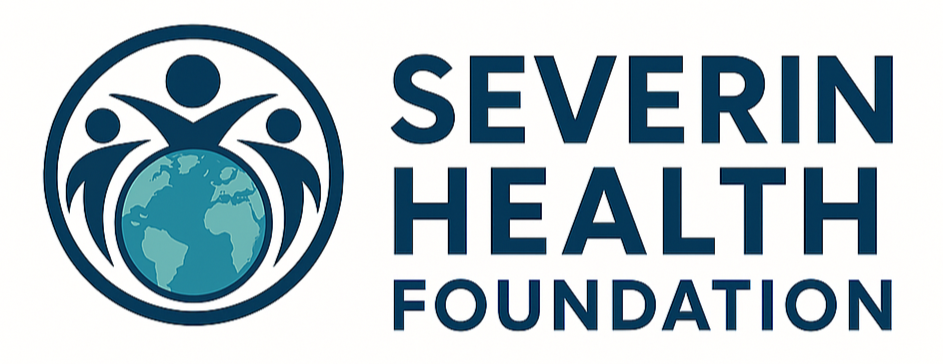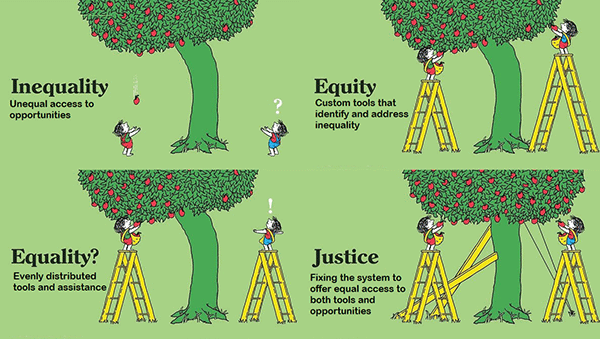Health Equity: What It Is, Who It Affects, and How We Can Fix It?
Health equity is not just a public health goal. It is a moral imperative and an economic necessity. It means that everyone has a fair and just opportunity to be as healthy as possible, regardless of race, income, geography, disability, or other social determinants. But for millions, this is far from reality. Systemic barriers rooted in policy, discrimination, and underinvestment continue to shape who gets to live a long, healthy life and who does not.
What Is Health Equity?
The World Health Organization defines health equity as the absence of unfair, avoidable, or remediable differences among groups of people, whether defined socially, economically, demographically, or geographically. Health equity is achieved when everyone can attain their full potential for health and well-being. It is shaped by the conditions in which people are born, grow, live, work, and age, not just by access to medical care [1].
Who Experiences Health Inequity?
Health inequities disproportionately affect people who are marginalized by race, income, geography, gender identity, disability, and education level. These groups face higher rates of chronic disease, maternal mortality, mental illness, and premature death.
Racial and Ethnic Minorities: In the United States, Black women face a maternal mortality rate of 50.3 deaths per 100,000 live births, which is more than three times higher than white women [2].
Low-Income Communities: Poverty limits access to nutritious food, safe housing, and preventive care. Children born in low-income countries are 13 times more likely to die before age five than those in high-income countries [3].
LGBTQ+ Youth: LGBTQ+ young people are more than four times as likely to attempt suicide than their peers. In 2023, 39 percent seriously considered suicide, and 19 percent attempted it. Among transgender and nonbinary youth, nearly half considered suicide [4].
People with Disabilities: Many face inaccessible facilities, provider bias, and inadequate insurance coverage.
Indigenous Peoples: Globally, Indigenous communities have lower life expectancies and higher rates of preventable diseases due to systemic neglect.
The Human Cost of Health Inequity
The suffering caused by health inequity is profound. In Chicago, Black residents live 10 years less than white residents, largely due to chronic disease and lack of access to care [5].
Globally, over 700 women die every day from preventable causes related to pregnancy and childbirth. More than 90 percent of maternal deaths occur in low- and lower-middle-income countries [2].
Mental health disparities are equally alarming. LGBTQ+ youth, especially those who are transgender or nonbinary, face elevated risks of depression, anxiety, and suicide due to bullying, discrimination, and lack of affirming care [4].
The Financial Toll
Health inequity is not just a humanitarian crisis. It is an economic one. A 2023 NIH-funded study found that racial and ethnic health disparities cost the U.S. economy 451 billion dollars in 2018. Education-related disparities added another 978 billion dollars [6].
Deloitte estimates that health inequities currently account for 320 billion dollars in annual healthcare spending and could exceed 1 trillion dollars by 2040 [7].
Specific conditions illustrate this cost:
Diabetes: 15.6 billion dollars in unnecessary spending due to inequitable access and delayed care [8].
Asthma: 2.4 billion dollars annually from preventable hospitalizations and inadequate treatment [5].
How to Combat Health Inequity
Solving health inequity requires bold, multi-sector action. Here are key strategies:
Invest in Public Health Infrastructure Strengthen primary care, expand community health centers, and fund local health departments.
Address Social Determinants Improve housing, education, transportation, and employment to shape healthier lives.
Advance Racial and Gender Equity Implement inclusive policies, diversify leadership, and train providers to reduce bias.
Expand Coverage and Access Support universal health coverage and Medicaid expansion to reduce disparities.
Use Data to Drive Change Collect and analyze disaggregated data to identify gaps and track progress.
Engage Communities Co-design solutions with those most affected. Community health workers and local coalitions are essential.
Reform Payment Models Tie reimbursement to improved outcomes in marginalized populations.
Tackle Environmental and Climate Justice Invest in clean air, water, and climate-resilient infrastructure in vulnerable communities.
Conclusion
Health equity is achievable. The suffering caused by inequity is measurable, and the financial cost is staggering. But the solutions are within reach. By investing in communities, redesigning systems, and centering equity in every decision, we can build a future where health is not a privilege, but a right.
““Health equity is not about giving everyone the same thing; it’s about giving everyone what they need to be healthy.””
This principle comes to life in small but powerful ways. In Alameda County, California, the Public Health Department partnered with local organizations to launch neighborhood-based health equity initiatives. These were not massive programs. They were practical, grassroots efforts that met people where they were. Pop-up clinics offered vaccines and blood pressure screenings in barbershops and churches. Community health workers distributed culturally tailored health materials door to door. Local coalitions organized tenant rights workshops to address housing insecurity, a key driver of poor health.
These efforts did not require billion-dollar budgets. They required trust, collaboration, and a commitment to listening. Over time, they helped reduce emergency room visits, improve chronic disease management, and strengthen community resilience.
Health equity does not begin with sweeping reforms. It begins with small, intentional acts of justice. Every clinic that extends its hours, every school that adds mental health support, every policymaker who listens to marginalized voices contributes to a healthier, more equitable future.
Let us make “health for all” more than a slogan. Let us make it a reality.
Now, please watch this video explain health inequity….
References
World Health Organization. Health Equity. https://www.who.int/health-topics/health-equity
CDC. Maternal Mortality Rates in the United States, 2023. https://www.cdc.gov/nchs/data/hestat/maternal-mortality/2023/maternal-mortality-rates-2023.htm
Healthwise Nigeria. Children in poor countries 13 times more likely to die before five – WHO. https://healthwise.punchng.com/children-in-poor-countries-13-times-more-likely-to-die-before-five-who
The Trevor Project. Facts About LGBTQ Youth Suicide. https://www.thetrevorproject.org/resources/article/facts-about-lgbtq-youth-suicide
American Medical Association. Inequity Damages Health and Drains the Economy. https://www.ama-assn.org/delivering-care/health-equity/inequity-damages-health-and-drains-economy
National Institutes of Health. Financial Toll of Health Disparities in the United States. https://www.nih.gov/news-events/news-releases/nih-funded-study-highlights-financial-toll-health-disparities-united-states
Deloitte Insights. Economic Cost of Health Disparities. https://www2.deloitte.com/us/en/insights/industry/health-care/economic-cost-of-health-disparities.html
Healthcare Dive. Health Inequity Spending Research. https://www.healthcaredive.com/news/health-inequity-spending-deloitte-research/625874

